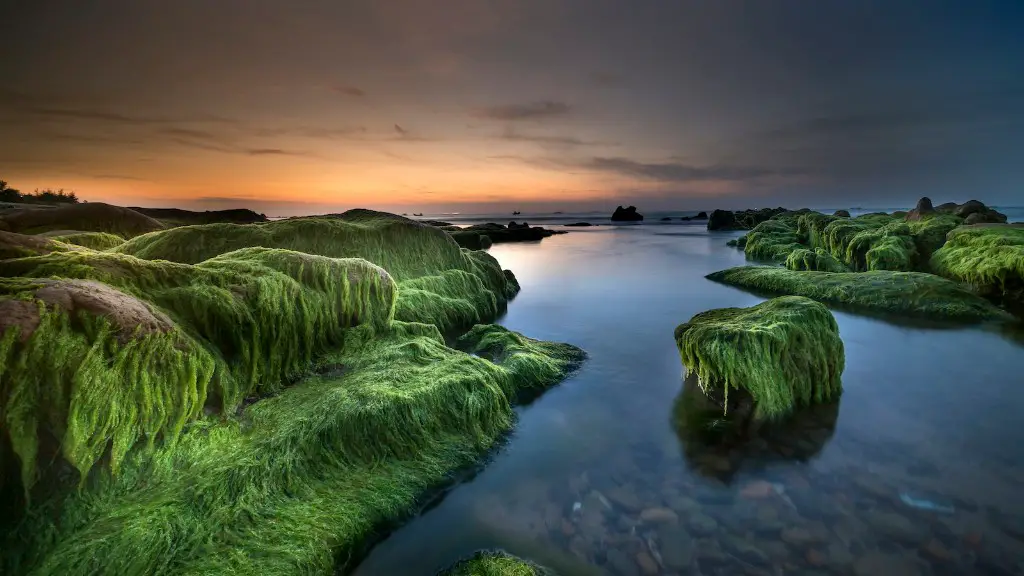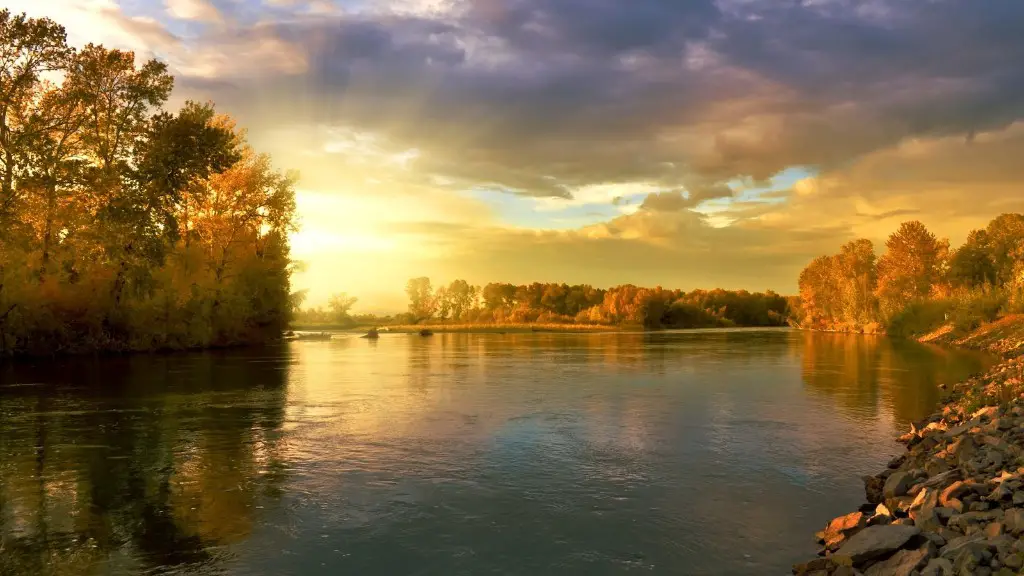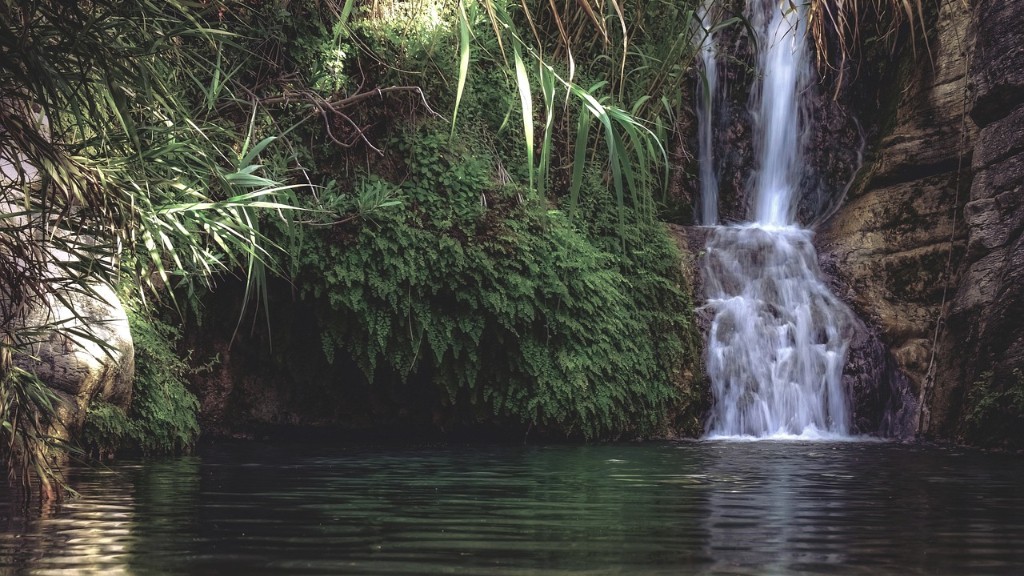From its source in the Great Lakes region in East Central Africa to its mouth in the Mediterranean Sea, the Nile River is one of the longest rivers in the world – stretching over 6,853 km. That’s something worth celebrating right? Well yes, the Nile’s importance is echoed by those who live along its banks. For centuries, the Nile has been instrumental in supporting life, and its secrets remain lost in time. This article seeks to explore why the Nile River is so significant and its impact on human and animal life.
The Nile River is both a geographic lifeline and cultural connector for millions of people living in North Africa and the Middle East. Archaeological evidence suggests the river was used for trade and transportation as early as 10,000 BC. For the ancient civilizations along its banks, the Nile was the force of life, providing them with fertile soils necessary to cultivate food and sustain life. Ancient Egyptians referred to the Nile as Ar “the river” and they strongly associated it with the God Hapi, who was seen as the giver of life and fertility. For the Egyptians, the Nile was incredible source of sustenance and often depicted in temples and tombs, in the form a symbol of power and rejuvenation.
Today, the Nile River provides energy to 11 countries and is a major source of water for agriculture and hydroelectric power for millions of people in Africa. It also supports shipping, fishing, and cultural activities. These include recreational river cruises, art, and music unique to the region. But without doubt, the Nile’s most important contribution to its large population is as a provider of food. It has been responsible for feeding much of the Mediterranean for nearly 7,000 years, and nearly 100 million people rely directly on it for water, food, and medicine.
Pollution, damming, and climate change remain a big threat to this major life source. Decades of mismanagement, fossil fuel emissions and industrialization have polluted 95 percent of the river’s water. Such activities have forced local populations to tap into wastewater and other ‘substandard’ sources to survive. In addition, hydroelectric dams have altered the river environment, reducing the flow of water and water levels, eliminating natural nutrient stores and reducing soil fertility.
It is clear that the Nile River plays a vital role in keeping its edge of the world safe and full of life. This is primarily due to the river’s capacity to support food, energy and water security, helping protect local and regional economies from natural disasters. Its unique landscape and cultural history will always be valued, but efforts must be taken to ensure it also remains a significant source of sustainable development and economic growth.
Role of International Partnerships
The Nile River is an area of significant international cooperation and partnership. International organizations, such as The United Nations and World Bank, have supported major projects focusing on the river’s ecology, water utilization and management, and conservation. While these projects have made significant contributions to the health of the river, there remains a need for greater oversight and enforcement of multinational agreements to ensure the protection and sustainability of the river.
The implementation of treaties, such as the Nile Basin Initiative and the Cooperative Framework Agreement, seek to ensure conflict management and equitable water allocation among the 11 countries sharing the Nile waters. While progress has been made in establishing shared cooperative models and norms, enforcement of these collaborative agreements is necessary to ensure further progress.
International cooperation is not just limited to the Nile. The world is facing the impacts of climate change and freshwater availability is becoming a major global challenge. The Nile is a valuable example of how international governance and partnerships can be employed to reduce conflict and promote stability in an unstable region.
It is clear that the role of international partnerships is essential in maintaining a healthy Nile River and in ensuring its continuing importance. As competition for shared resources gain intensity, effective management and protection of the river requires the collective efforts of each of the participating countries.
Conservation Efforts
The conservation of the Nile River is essential to sustain human and animal life in the region. But it requires a strong and dedicated effort from all nations that sharing its waters. Unfortunately, recent conservation efforts have not been effective, and many of the river’s natural habitats and ecosystems are threatened by various environmental and human impacts.
Organizations such as the World Wildlife Fund are leading the way with initiatives that aim to protect the river’s biodiversity, promote sustainable water management, and reduce pollution. They are also raising awareness and educating populations on the need to protect the river by highlighting its importance in providing livelihoods and food security.
In addition to the efforts of environmental organizations, governments are working to improve agricultural practices and reduce water waste, implement regulations to control agricultural runoff, and introduce water-saving technologies. Large-scale projects, like the Grand Ethiopian Renaissance Dam which helps with water storage and power generation, are being implemented in some areas of the Nile Basin to promote greater resource management and conservation.
Ultimately, the conservation and protection of the Nile River depend on collective action, which must be taken up by every nation that is dependent on the river’s waters. Only through the combined efforts of all stakeholders can the river’s delicate balance be maintained, and its natural richness be sustained.
Role of Traditional Practices
Traditional practices and beliefs have played a significant part in the conservation of the Nile River. From the Greco-Roman era, to the Mamluk period, traditional forms of knowledge, including irrigation systems and engineering technologies, have been used and developed to try to minimize or avoid damage to the river due to climate change, pollution or over-utilization of natural resources.
The knowledge of traditional stewards who are at the grassroots level and have inherited this knowledge from their ancestors, is essential in preserving the river. Traditional practices that involve seasonally alternating between cultivation and fallow lands and the prevention of over-fishing prevent the river from being over-utilized and can help to limit water pollution.
Keeper of the Nile, a program aimed at conserving the river’s resources and its cultural values, is just one example of how traditional practices can improve the management and use of the river. This particular program has played a significant role in increasing interest in the biophysical and cultural values of the Nile, and in bringing together stakeholders in collaborative efforts to promote conservation and education that help sustain the river’s use and beauty.
Understanding Cultural Heritage
Cultural heritage is an essential element in understanding the ecological, economic and social significance of the Nile. The long history of human activity in this region means that many aspects of the river’s cultural heritage, such as its songs, art and food, are deeply intertwined with the local environment and its people.
Throughout history, the river has been an essential ingredient in shaping local customs and traditions. For example, the ancient Egyptians believed that the Nile flows from the mouth of the God Hapi, suggesting that the river was seen as a god-given right. This belief continues to inspire communities living along the river and is linked to their spiritual values.
Such beautiful cultural heritage makes the Nile a source of identity, pride and inspiration to many. It is also important to note that it is only with the understanding and appreciation of this cultural heritage that global conservation efforts will be able to succeed.
The Creative Arts
The creative arts play a key role in preserving the cultural heritage of the Nile. It is through art, music and literature that communities living in the region express their love for the river. Creative expression in the form of painting, pottery, sculpture and dance is also important for raising awareness and for sparking the necessary changes to protect the river.
Since 2014, the annual Nile River Festival has sought to bring together the residents of the Nile Valley to celebrate its beauty and to promote positive action towards its protection. The festival includes music concerts, workshops and exhibitions and seeks to highlight the importance of the river in the region. These events demonstrate the power of unity among stakeholders that can help ensure that the Nile River remains healthy for generations to come.
The Nile River is a source of energy, food, transportation and culture for millions of people around the world. Every nation that shares its waters has a responsibility to ensure that its towering trees, fish, and birds are protected. Together with creativity, the collective conservation efforts of all stakeholders can promote a better understanding and appreciation of this great river’s incredible heritage.





